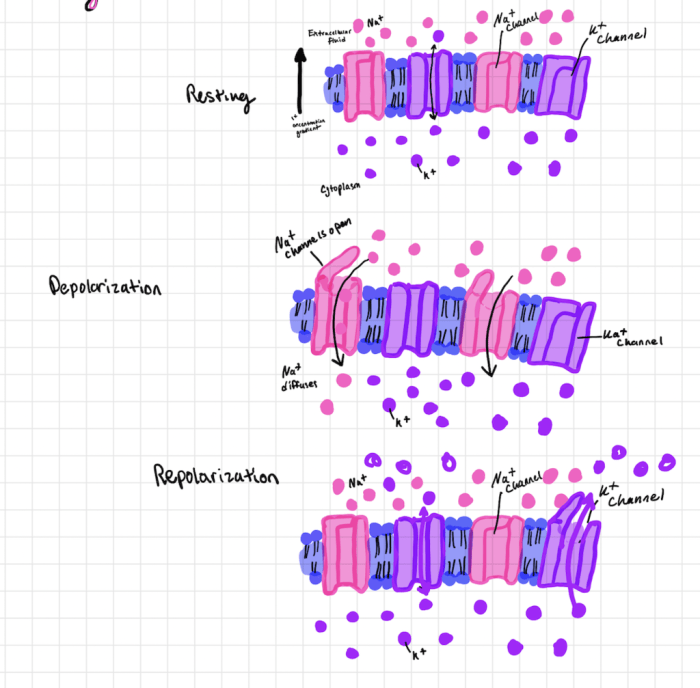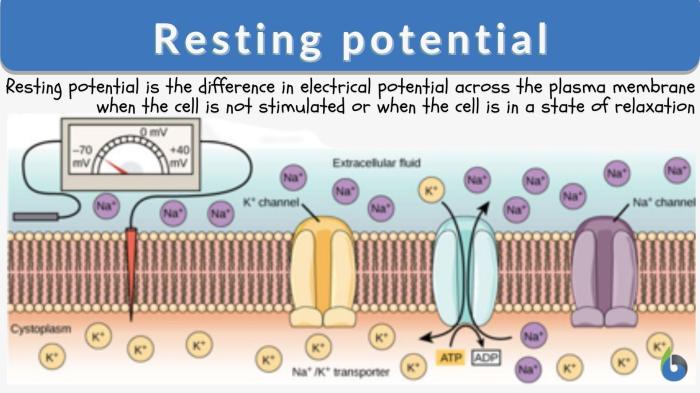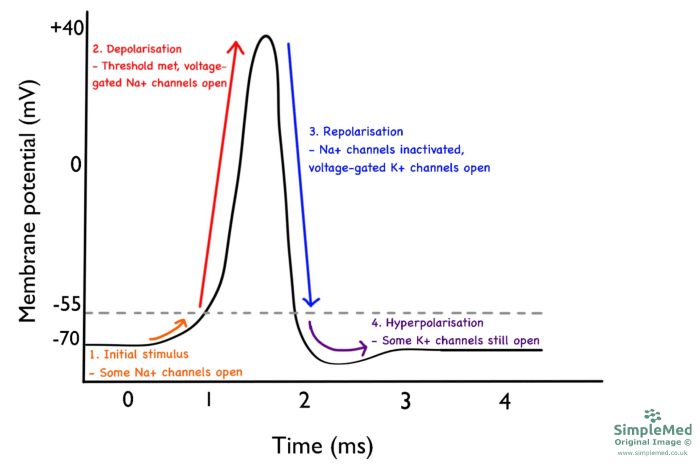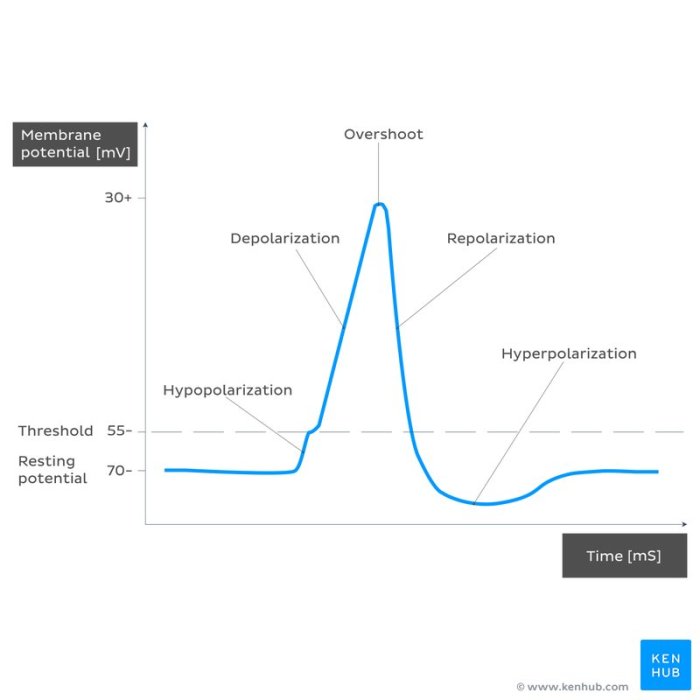Select all the true statements about a neuronal action potential – Delving into the intricacies of neuronal action potentials, this comprehensive guide unveils the fundamental principles governing these rapid electrical impulses that underpin neuronal communication. From defining the concept to exploring its propagation and diverse manifestations across neuron types, we embark on a journey to unravel the secrets of this essential physiological phenomenon.
An action potential represents a transient surge of electrical activity that swiftly propagates along the axon of a neuron, transmitting information over long distances. This electrical impulse arises from a complex interplay of ion channels and ion concentration gradients, leading to a rapid depolarization and repolarization of the neuronal membrane.
Define an Action Potential: Select All The True Statements About A Neuronal Action Potential

An action potential is a rapid electrical change that occurs in the membrane of a neuron. It is a fundamental process in neuronal communication, allowing neurons to transmit information over long distances.
Action potentials are generated by the movement of ions across the neuronal membrane through ion channels. When a neuron is at rest, the inside of the neuron is negative relative to the outside. This resting potential is maintained by the sodium-potassium pump, which pumps three sodium ions out of the neuron for every two potassium ions it pumps in.
When a neuron receives a stimulus that is strong enough to reach its threshold potential, the sodium channels in the membrane open. This allows sodium ions to rush into the neuron, causing the inside of the neuron to become positive relative to the outside.
This depolarization triggers the opening of more sodium channels, creating a positive feedback loop that results in a rapid reversal of the membrane potential.
Phases of an Action Potential

An action potential consists of four distinct phases:
- Resting phase:The neuron is at rest, with the inside of the neuron negative relative to the outside.
- Depolarization phase:The sodium channels open, allowing sodium ions to rush into the neuron, causing the inside of the neuron to become positive relative to the outside.
- Repolarization phase:The sodium channels close and the potassium channels open, allowing potassium ions to flow out of the neuron, causing the inside of the neuron to become negative relative to the outside.
- Hyperpolarization phase:The potassium channels remain open, causing the inside of the neuron to become more negative than the resting potential. This is followed by a refractory period, during which the neuron is unable to generate another action potential.
Propagation of an Action Potential

An action potential is propagated along an axon by a process called saltatory conduction. In this process, the action potential jumps from one node of Ranvier to the next, skipping the myelinated regions of the axon.
Saltatory conduction is more efficient than continuous conduction because it reduces the amount of current that is lost through the membrane. This allows action potentials to travel over long distances without losing their strength.
Factors Affecting Action Potential

A number of factors can affect the action potential, including:
- Temperature:The rate of ion channel opening and closing is affected by temperature. Higher temperatures increase the rate of ion channel opening, which can lead to faster action potentials.
- Ion concentrations:The concentrations of sodium and potassium ions in the extracellular and intracellular fluids can affect the action potential. Changes in ion concentrations can alter the threshold potential, amplitude, and duration of the action potential.
- Drugs:A number of drugs can affect the action potential. Some drugs, such as tetrodotoxin, block sodium channels, which can prevent action potentials from being generated. Other drugs, such as verapamil, block calcium channels, which can slow down the rate of action potential propagation.
Action Potential in Different Neuron Types
The action potential differs in different types of neurons. Sensory neurons have a relatively low threshold potential and a short duration. Motor neurons have a relatively high threshold potential and a long duration. Interneurons have a variety of threshold potentials and durations.
These differences in the action potential reflect the different functions of different types of neurons. Sensory neurons are responsible for transmitting information from the periphery to the central nervous system. Motor neurons are responsible for transmitting information from the central nervous system to the muscles.
Interneurons are responsible for transmitting information between neurons within the central nervous system.
Top FAQs
What is the threshold potential?
The threshold potential is a critical membrane potential that must be reached or exceeded to trigger an action potential.
What is the refractory period?
The refractory period is a brief period following an action potential during which the neuron is less excitable and cannot generate another action potential.
What factors can affect the action potential?
Factors such as temperature, ion concentrations, and drugs can alter the threshold potential, amplitude, and duration of the action potential.